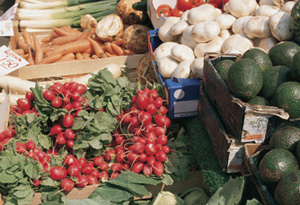10 Ways to Shift Your Habit and Save $1,500 on Food

The average American household spends two hours and almost $100 on groceries per week. This nets out to about 104 hours and more than $5,000 per year. Of this total, roughly $560 pays for fresh produce...while more than $1,100 goes toward sweets, packaged snacks and other processed foods.
According to Shift Your Habit author Elizabeth Rogers, a few small changes can add up to big savings for you and your family—and the planet!
Buy Seasonal Produce, Save $130According to Shift Your Habit author Elizabeth Rogers, a few small changes can add up to big savings for you and your family—and the planet!
You'll save big if one-third of the produce you buy is out of season. Buying local, seasonal produce reduces the amount of transport energy—or "food miles"—it takes to bring your food from farm to table. In order to carry certain fruits and vegetables year-round, supermarkets buy them from countries in the Southern Hemisphere. To preserve freshness and prevent bruising, growers package imported produce in excessive amounts of plastic and cardboard. Check the Country of Origin Label (COOL) produce sticker to see where an item originated. In order for out-of-season fruits and vegetables to survive the long-distance journey, it's necessary to harvest them long before they reach full ripeness. This may result in inferior taste, quality and nutritional value compared to in-season produce.
Check out farmers' markets and farm stands for the best prices on truly local, seasonal produce. Visit the USDA Agricultural Marketing Service's website for a handy search tool, which will help you find farmers' markets in your area.



